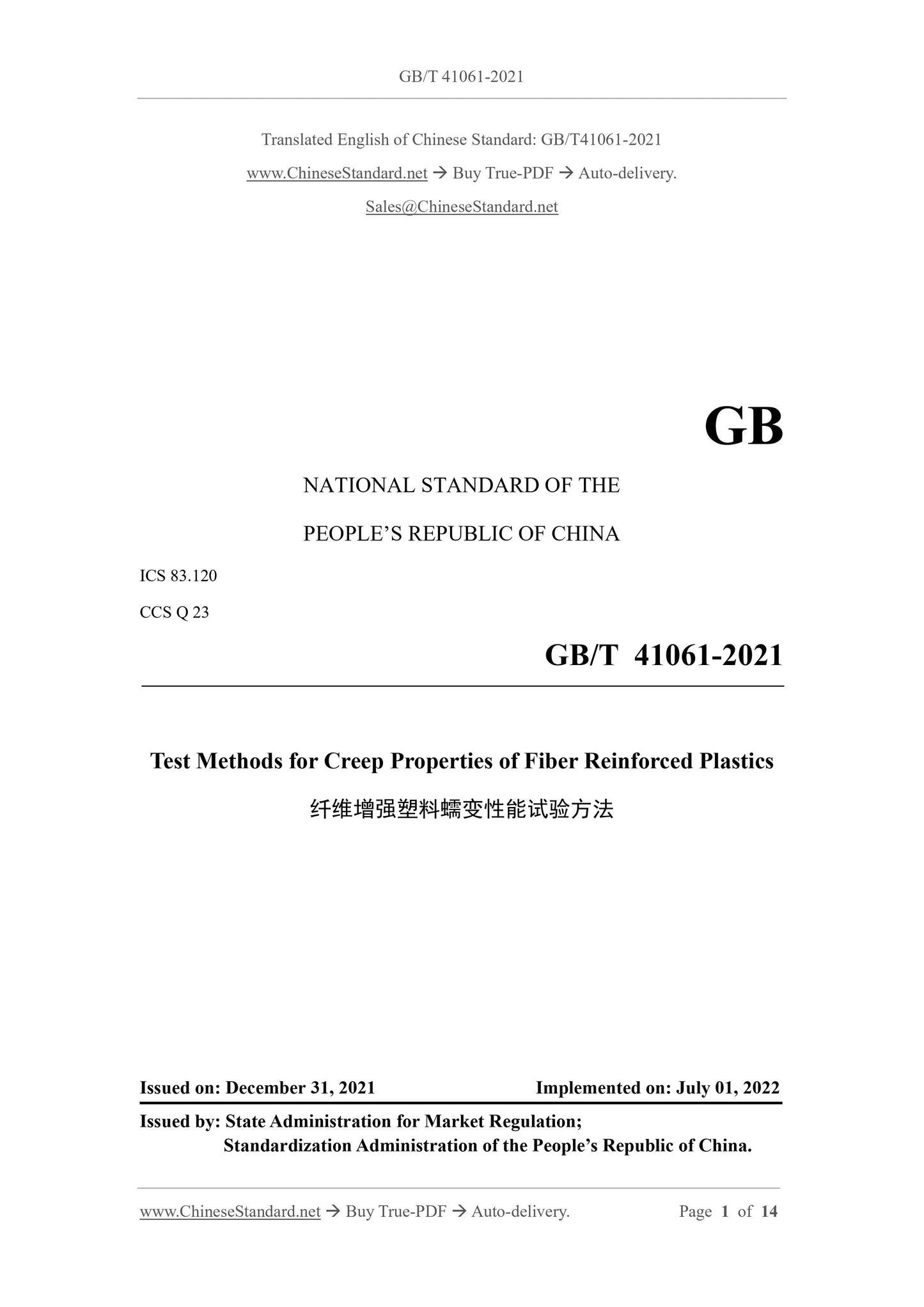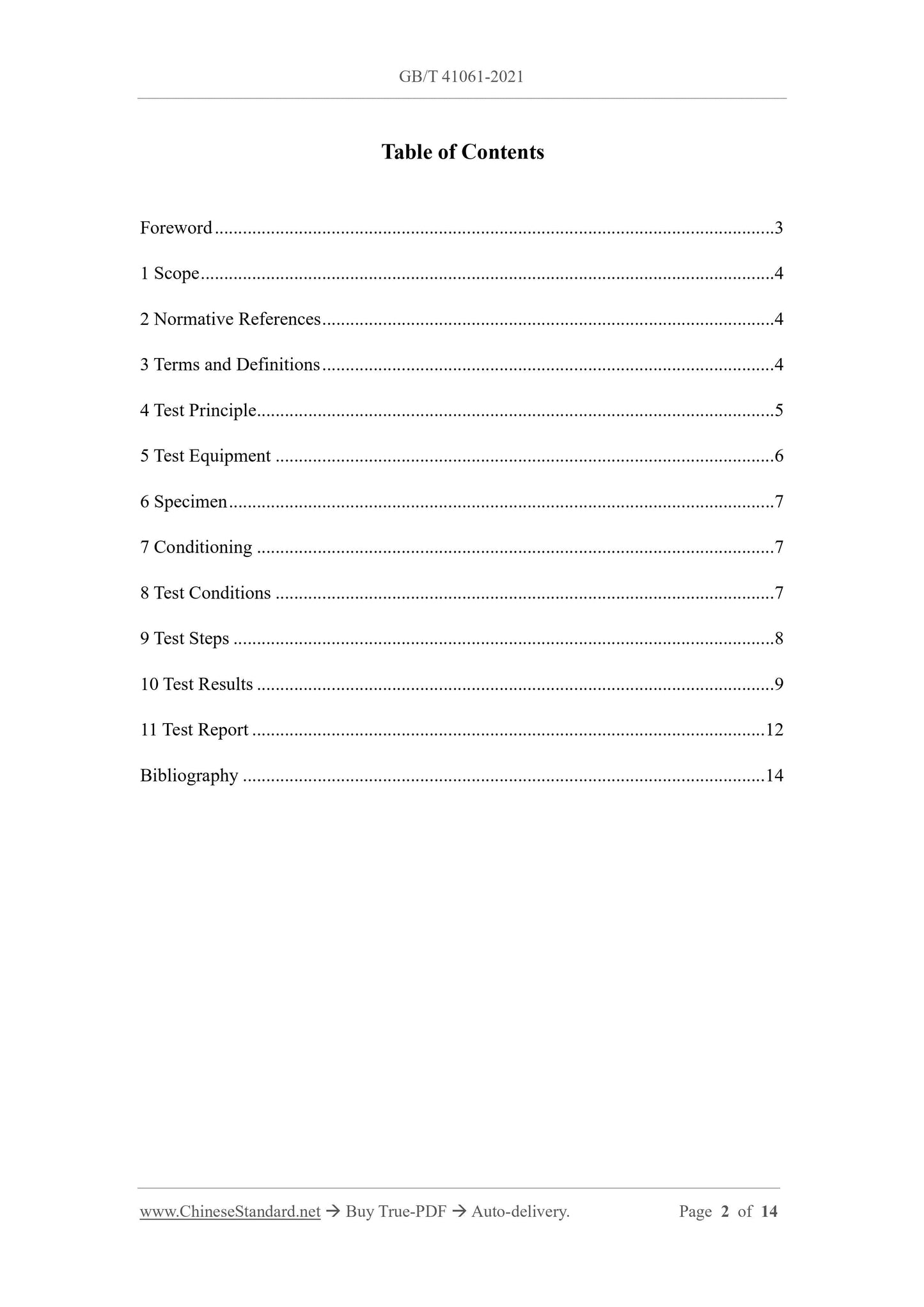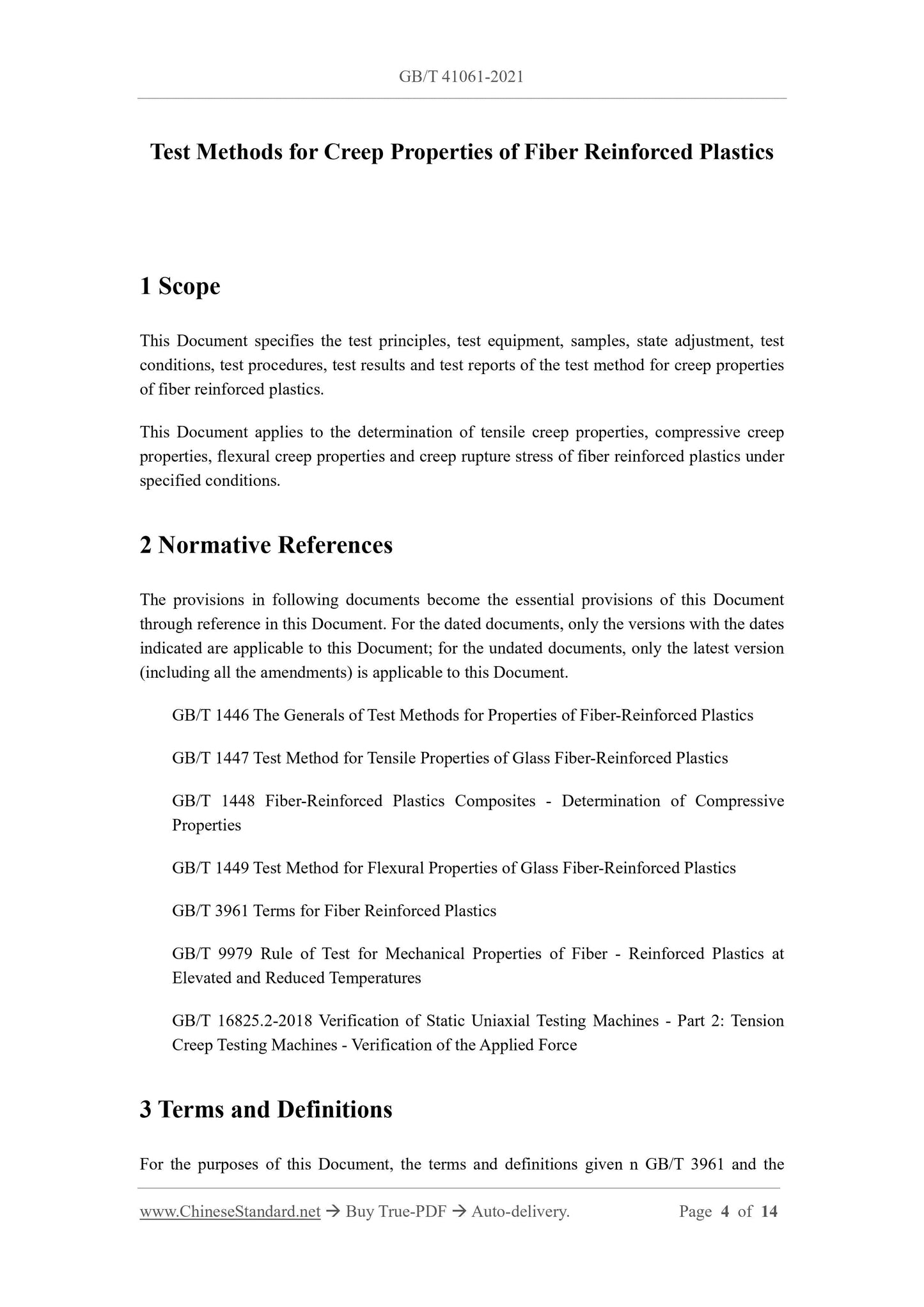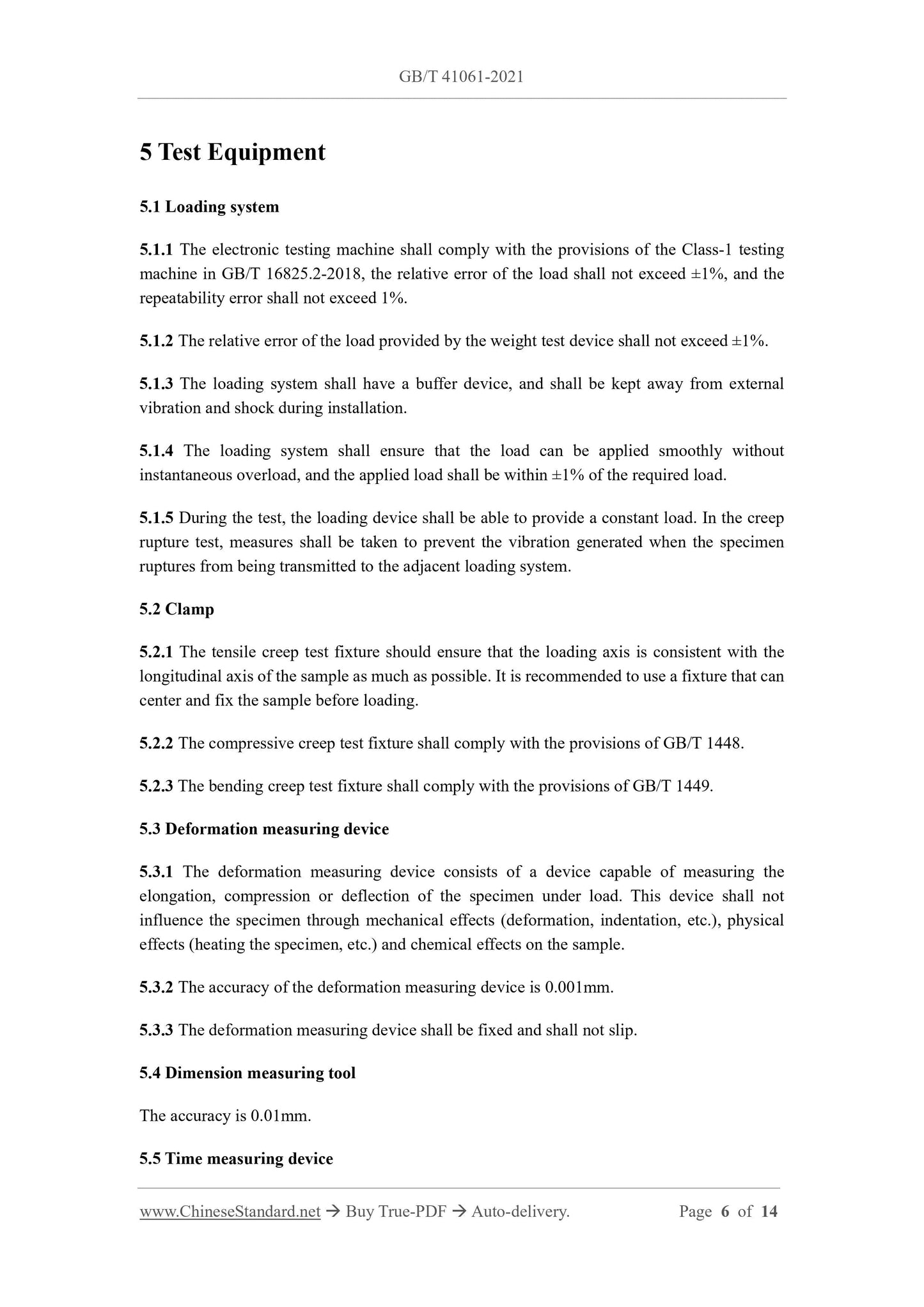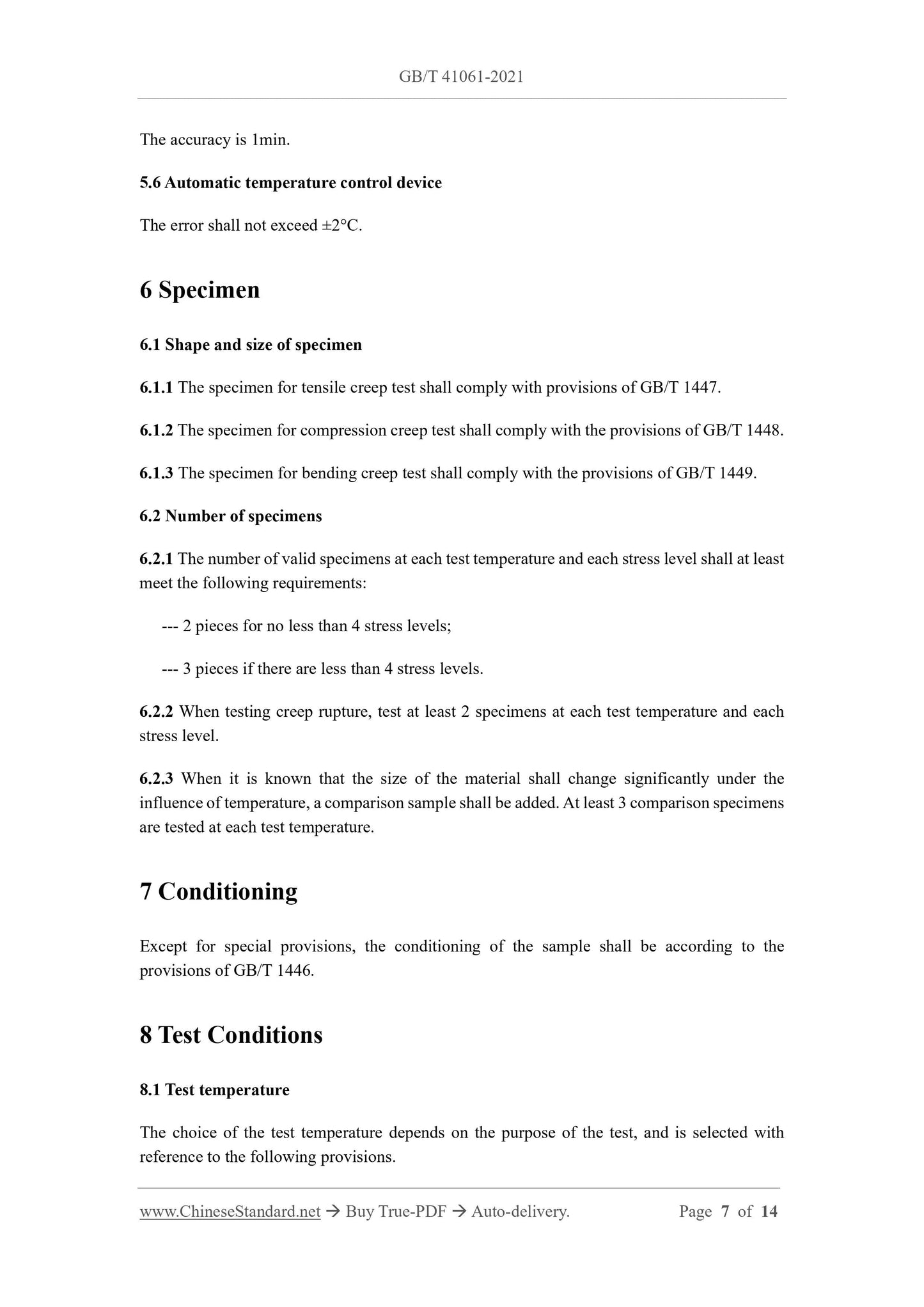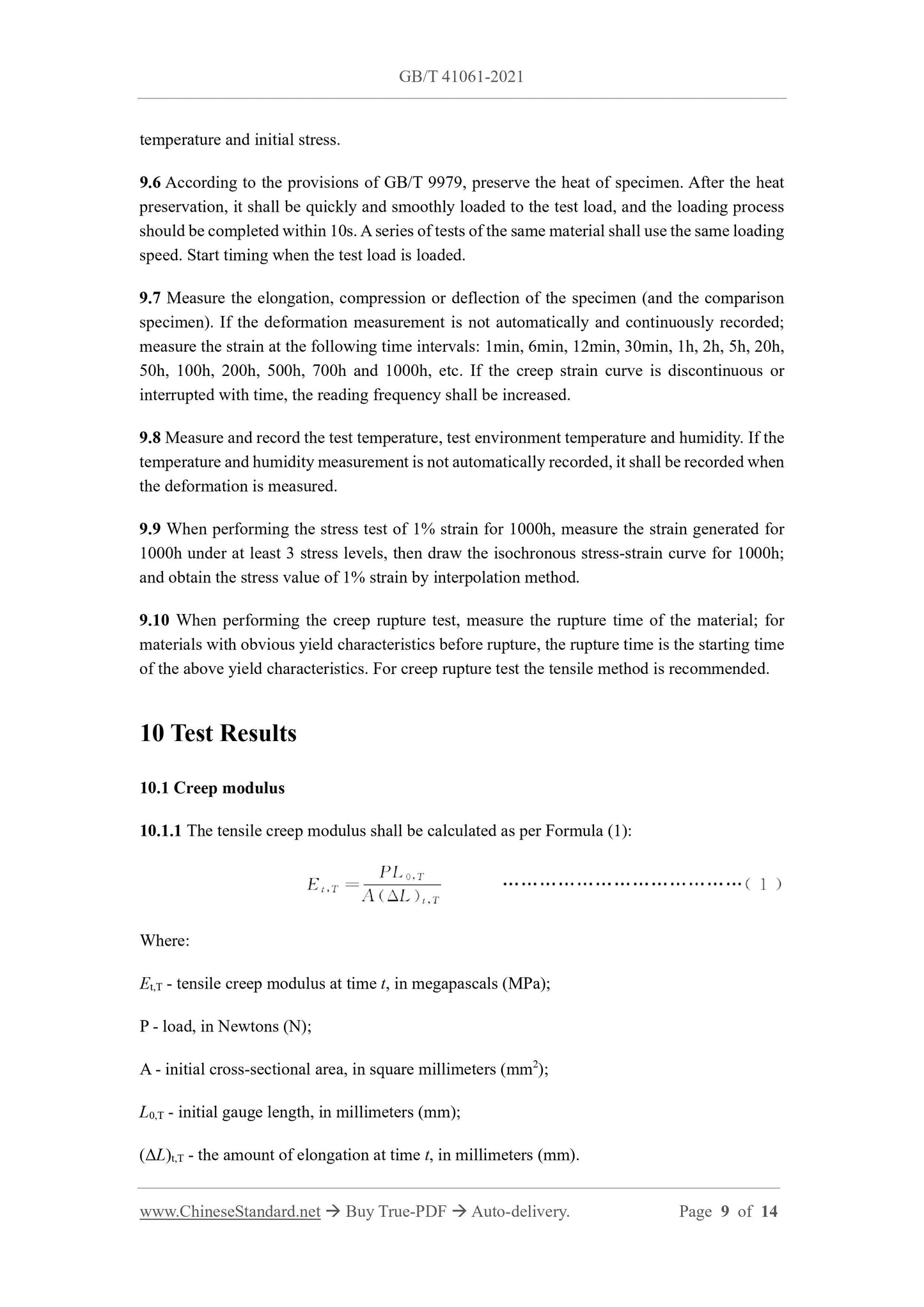1
/
of
6
www.ChineseStandard.us -- Field Test Asia Pte. Ltd.
GB/T 41061-2021 English PDF (GB/T41061-2021)
GB/T 41061-2021 English PDF (GB/T41061-2021)
Regular price
$170.00
Regular price
Sale price
$170.00
Unit price
/
per
Shipping calculated at checkout.
Couldn't load pickup availability
GB/T 41061-2021: Test methods for creep properties of fiber reinforced plastics
Delivery: 9 seconds. Download (and Email) true-PDF + Invoice.Get Quotation: Click GB/T 41061-2021 (Self-service in 1-minute)
Newer / historical versions: GB/T 41061-2021
Preview True-PDF
Scope
This Document specifies the test principles, test equipment, samples, state adjustment, testconditions, test procedures, test results and test reports of the test method for creep properties
of fiber reinforced plastics.
This Document applies to the determination of tensile creep properties, compressive creep
properties, flexural creep properties and creep rupture stress of fiber reinforced plastics under
specified conditions.
Basic Data
| Standard ID | GB/T 41061-2021 (GB/T41061-2021) |
| Description (Translated English) | Test methods for creep properties of fiber reinforced plastics |
| Sector / Industry | National Standard (Recommended) |
| Classification of Chinese Standard | Q23 |
| Word Count Estimation | 10,152 |
| Issuing agency(ies) | State Administration for Market Regulation, China National Standardization Administration |
Share
